from the Editors
January 4, 2013
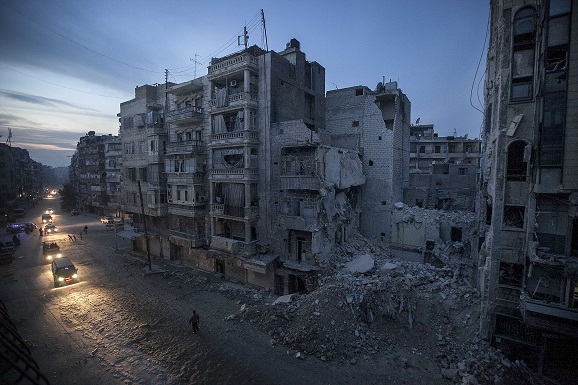
Crisis in Syria: Observers say that neither the various armed rebel forces nor the Assad regime they are fighting can “win” militarily. As defections from the government continue, Syrian President Bashar al-Assad states that he will not seek asylum in another country. Syrians flee across borders, see their cities devastated, and face mounting causalities. The question is starkly posed: how can Syrian civil society emerge from the chaos? (Photo: Narciso Contreras)
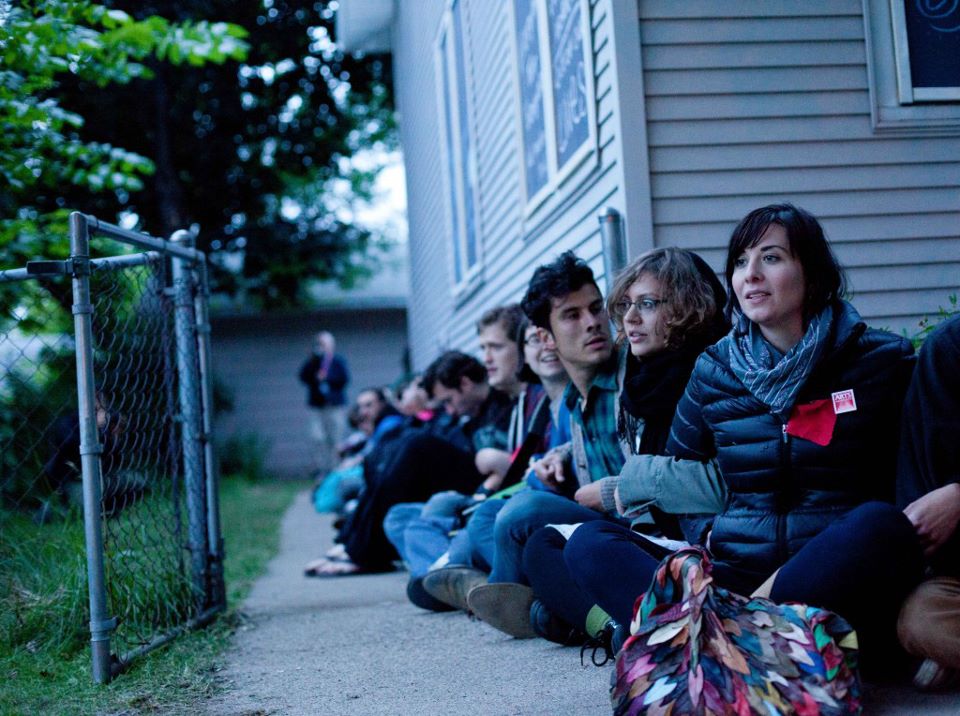
Occupy, repression and continuity: Occupy Wall Street, which began in September 2011, spread quickly across the country to protest economic inequality, the tyranny of “the 1%,” and the lack of a real political voice for “the 99%.” By January 2012, police repression had swept Occupy from most public spaces, with 7,719 arrests in 122 cities between September 2011 and December 2012. Nevertheless, Occupy as a movement persevered in the larger cities engaging in May Day actions, defending people from foreclosures, providing aid to victims of Hurricane Sandy, and kick-starting numerous other political projects. (Photo: Occupy Our Homes)
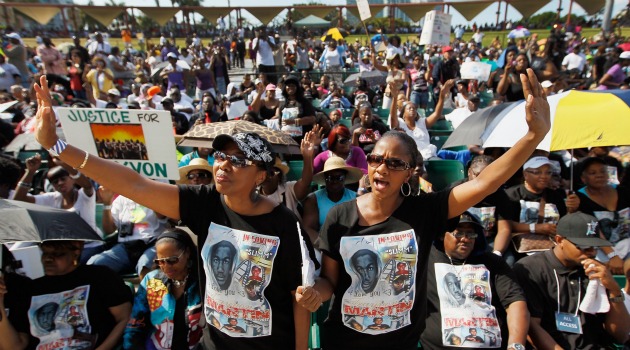
Trayvon Martin protests: Trayvon Martin, a 17-year-old African-American boy, was shot and killed on February 26 by George Zimmerman, a neighborhood watch coordinator, in Sanford, Florida. After following the teenager through the gated community where he was temporarily staying with his father and informing the police that Martin appeared to be suspicious, Zimmerman shot Trayvon Martin once, killing him. African-Americans and many others saw Zimmerman’s killing of Martin an unprovoked assault by a white vigilante on an unarmed Black boy. The failure of the authorities to take any legal action against Zimmerman for more than a month led to simmering anger among African-Americans, which finally boiled over in public protests across the country in April and May. The demonstrations and widespread public anger finally succeeded in pressuring the authorities to indict Zimmerman on second degree murder charges. (Photo: Getty Images)
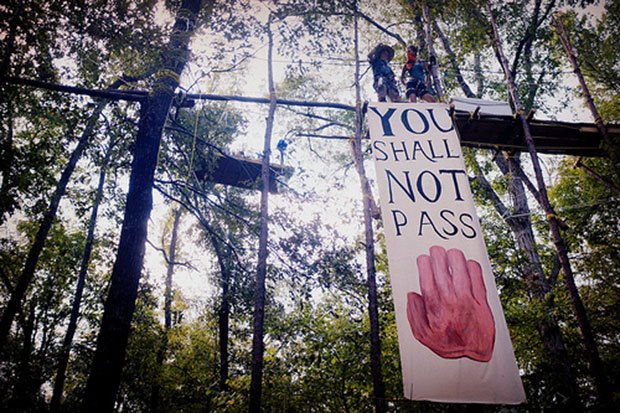
Tar Sands Extraction Moves Forward: The process of mining the tar sands beneath the vast and ancient boreal forests in Alberta, Canada is devastating at every part of the cycle—extraction, processing, transportation and refining. NASA climate scientist James Hansen has called it “game over” for efforts to protect the climate if the tar sands oils are completely utilized. Those most immediately affected—indigenous people, farmers and townspeople along the proposed pipeline route in both Canada and the United States—have joined with climate justice activists to expose the dangers of extracting the tar sands, with some utilizing direct action to attempt to stop the construction of the pipeline in East Texas (above).
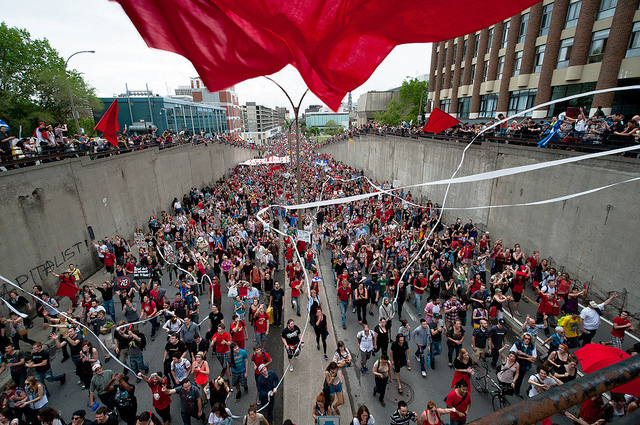
Quebec Students Strike Back: Quebec students opposed tuition hikes by organizing themselves and launching massive demonstrations, the largest of which was 200,000 strong. When restrictions were placed on their right to demonstrate, they ignored them. When a provincial election was called, the Liberal government lost and the new government withdrew the proposal. (Photo: David Vilder)
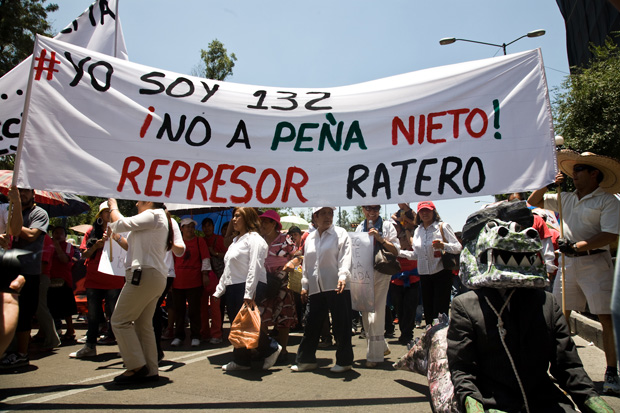
#YoSoy132 Protests the “Imposition” of Peña Nieto: The #YoSoy132 student movement erupted last summer in Mexico in opposition to the “imposition” of PRI candidate and current president Enrique Peña Nieto. They defined themselves as an autonomous, peaceful, student-led social and political movement, completely independent of the political parties, candidates and electoral organizations, concerned with the power of the capitalist media and lack of real democracy in the Mexican political system. They drew inspiration from the movement of the indignados in the Spanish state and Occupy in the US, and eventually won the support of Mexicans from all walks of life, among them school teachers, electrical workers, the urban poor and peasants, mobilizing hundreds of thousands for mass demonstrations. (Photo: Myles Estey)
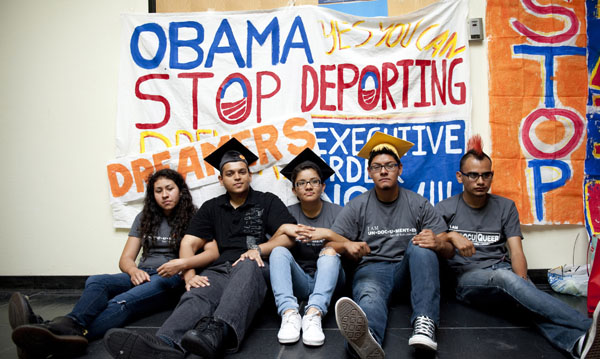
DREAMERs Force Obama’s Hand: In June, groups of young immigrants, many of them undocumented, began occupying campaign offices of President Barack Obama, demanding an Executive Order to cease deportation of “low priority” immigration cases. Despite making appeals to immigrants on the campaign trail during both elections, his administration had deported 1.4 million immigrants by 2012—1.5 times more than President George W. Bush. Under the pressure of the militant immigrant youth movement and hoping to secure the Latino vote, President Obama signed a memo calling for “deferred action” for certain undocumented young people who immigrated as children and have pursued education or military service in the US. (Photo: Grant Hindsley/AP)
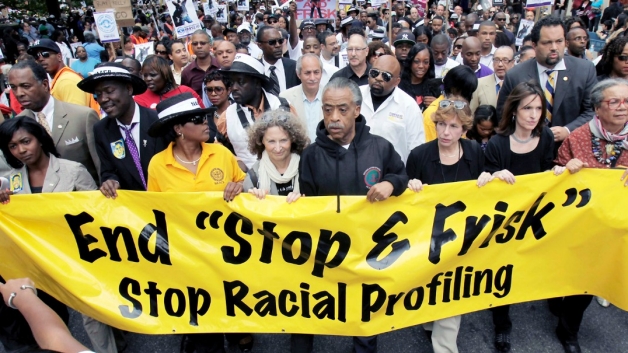
”Stop Stop-And-Frisk!”: Thousands of demonstrators, predominantly young African-Americans and Latinos, conducted a silent march down Fifth Avenue in New York City on Father’s Day, June 17 to protest the city’s racist “stop-and-frisk” police policies. The main organizers of the demonstration, Rev. Al Sharpton’s National Action Network, the National Association for the Advancement of Colored People (NAACP), and Local 1199 of the Service Employees International Union (SEIU) were joined by approximately 300 other organizations including labor unions, religious groups, LGBTQ groups, and Japanese, Chinese, Korean, Arab, and Jewish associations. (Photo: Seth Wenig/AP)
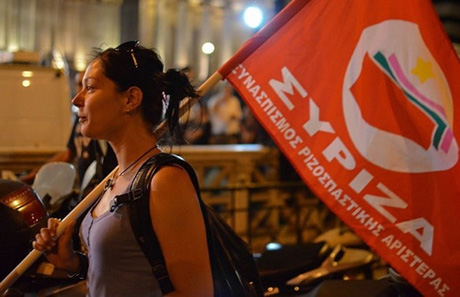
SYRIZA Comes Close: Although not winning a majority in the Greek elections, the leftist anti-austerity party SYRIZA gained considerable ground and finished in a close second place after New Democracy (ND). A coalition of ruling class parties including ND, PASOK, and the Democratic Left now control a country buckling under the load of austerity imposed upon it by the Troika. Although the crisis has propelled the radical left to newfound popularity over the past few years, it has also raised the profile of fascist groups like Golden Dawn.

Massacre at Marikana: The incident of heavily armed South African police deliberately shooting striking miners in Marikana is a defining moment for the African National Congress government, which has ruled since the fall of apartheid. Following the massacre, it was revealed that, at the highest level, the police were instructed to respond with force. To many observers, this incident was reminiscent of the apartheid police shooting of Soweto protesters in 1976. (Photo: Taurai Maduna/EWN)
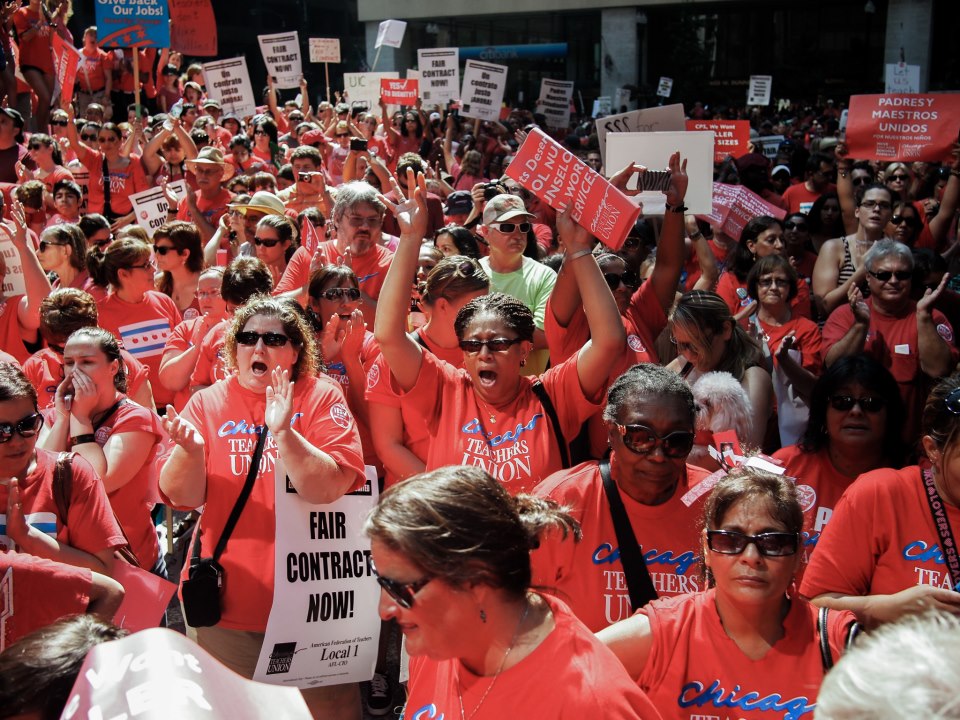
Chicago Teachers Take On Mayor 1%: The 29,000 member-strong Chicago Teachers Union, led by the Caucus of Rank and File Educators (CORE) and President Karen Lewis, struck from September 10 to 18. Broad community support, built through years of coalition work, helped them to reach an agreement from the city. While the CTU was only partially successful in winning its demands in the final contract, the union had stood up and fought back in the new period of crisis and austerity, providing a powerful example to the rest of the labor movement. (Photo: Isaac Steiner)
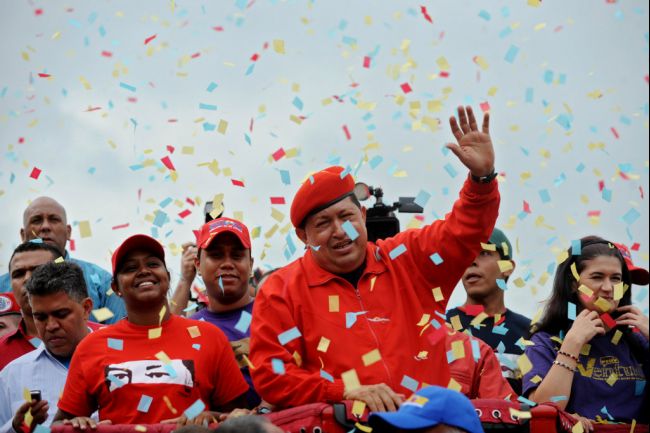
Bolivarian Revolution Defended: Hugo Chavez’s victory in the Venezuelan Presidential Elections was a blow to the right wing and a setback for Washington’s interests in the region. His victory was important to move the process of the “Bolivarian Revolution” forward, but his ongoing battle with illness, as well as the absence of a collective revolutionary leadership, casts dark clouds over that event just months later. (Photo: Leo Ramirez AFP/Getty Images)
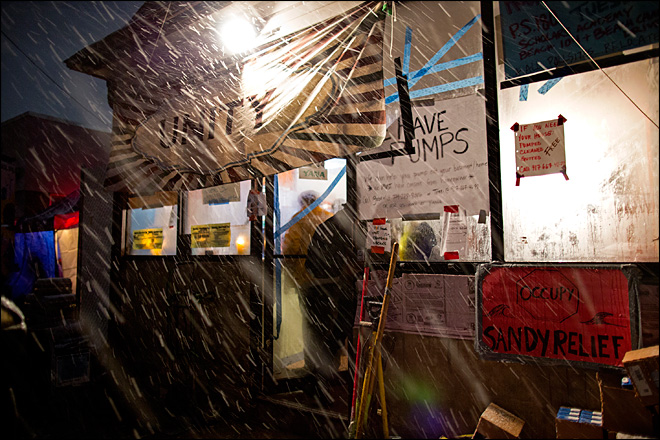
Occupy Sandy: After Hurricane Sandy, the largest Atlantic hurricane on record and one of the worst storms in US history, devastated parts of New Jersey and New York, tens of thousands were left homeless and many more deprived of heat, hot water, and in some cases, any water at all. Activists who had been active in Occupy Wall Street created “Occupy Sandy” and quickly mobilized volunteers to provide food, water, supplies of all sorts, and other forms of assistance to many of the hardest hit neighborhoods in New York City. Occupy Sandy showed that the radical protesters who had challenged the system were also capable of building structures and mobilizing volunteers in ways that were as effective, or sometimes more effective, than those of the state.
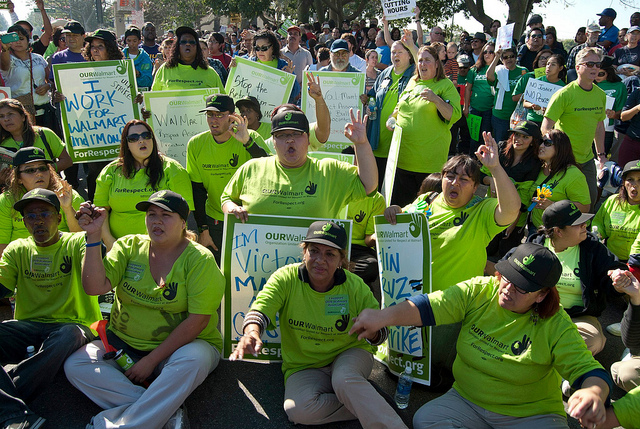
Walmart Strike Wave: Walmart, the staunchly anti-union employer of over two million workers worldwide, faced a series of unprecedented job actions initiated by workers at their suppliers, retail stores, and warehouses. In June, Mexican guestworkers employed at CJ’s Seafood, a Walmart supplier in Breaux Bridge, Louisiana, walked out over abusive treatment. Several months later, workers struck at two warehouses contracted with Walmart in Illinois and Southern California. On Black Friday, November 23, about fifty current and former Walmart workers, joined thousands of supporters on picket lines at 1,000 Walmart stores around the United States. (Photo: OUR Walmart)
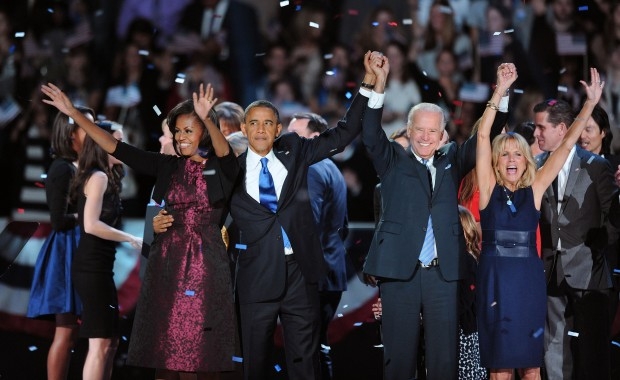
Republicans Defeated: The Republicans thought they could defeat President Barack Obama through passage of Voter ID laws and other restrictions on the right to vote. They also thought that Obama’s centrist policies had demoralized his base–but when faced with a candidate that was part of the 1%, voters, particularly African Americans, turned out to push Obama over the top. Several independent challenges were mounted from the left, from the Green Party, Socialist Party, the Party for Socialism and Liberation, Peace and Freedom Party, and the newly formed Justice Party, but all of them together accounted for less than one percent of the total popular vote. (Photo: Olivier Douliery)
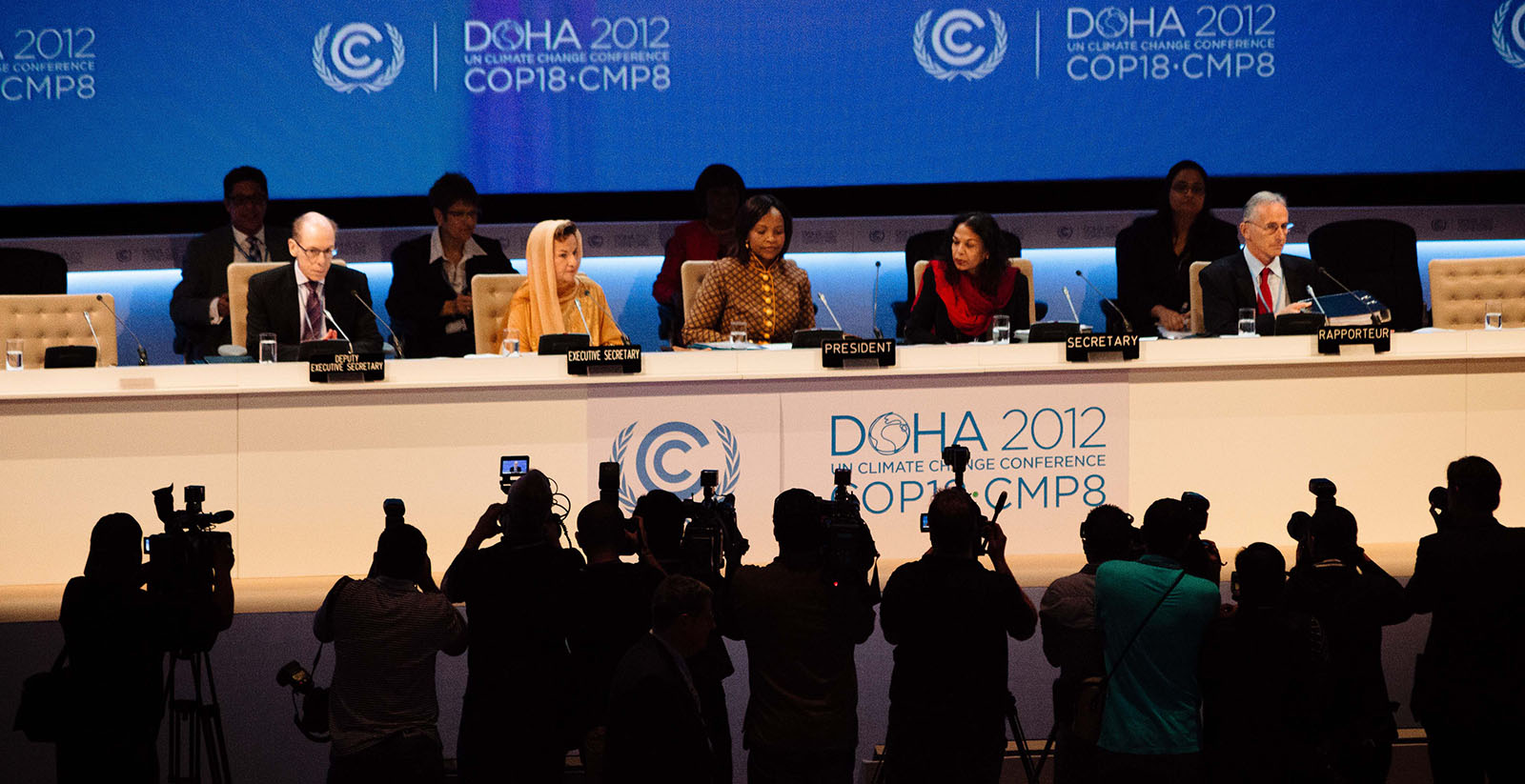
Doha Climate Conference: The annual United Nations climate summit (“COP18”) convened in Doha, the capital of the oil-rich emirate of Qatar. The only step taken to confront the massive challenge of climate change was to extend a loophole-filled Kyoto Agreement to 2020. The consequences were best described by Syrian-American student Munira Sibai, who addressed the climate justice movement directly to declare, “Your governments are failing you.” Her two-minute address pointed out that the entire process suffered not only from “a complete absence of vision” but from “an active effort by some to move backwards,” particularly that of the United States government. (Photo: Osama Faisal/AP)
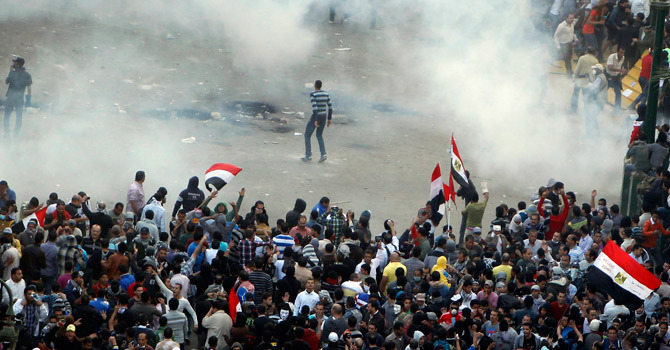
The Egyptian Revolution Continues: The Muslim Brotherhood held back from the initial demonstrations in Tahir Square last year, but was forced into the streets and the fight to bring down the now deposed president of Egypt, Hosni Mubarak. Unlike the young rebels of Tahir Square, they had a long-established network that enabled them to win a majority in the subsequent parliamentary and the presidential elections. However, they have been unable to govern in alliance with other forces, and mass protests have begun again to oppose current president Mohamed Morsi’s tightening grip on the political system. (Photo: Getty Images)

Israeli Assault on Gaza: On November 14, Israel launched yet another assault on the Gaza Strip, killing 161 Palestinians, 30 of whom were children. This barbarity ignited protests all over the world and, no longer able to rely on former allies like Egypt, Israel eventually acquiesced to a ceasefire. Almost immediately afterward, Palestine was voted into the UN as a non-member observer state, to which Israel responded by announcing new illegal settlements in the West Bank. (Photo: Getty Images)
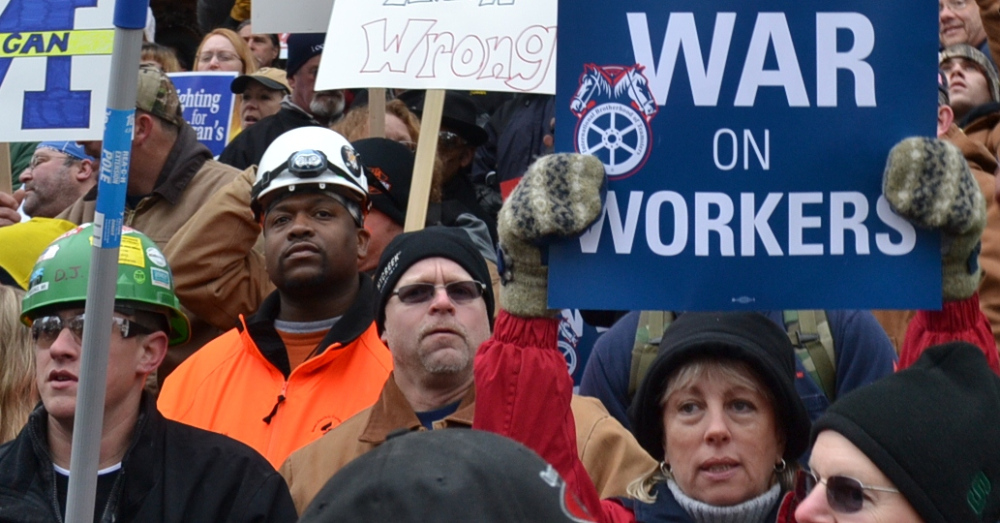
Michigan Goes “Right to Work”: Defying over ten thousand union demonstrators and his own campaign promises, Michigan Governor Rick Snyder signed legislation effectively preventing organized labor from collectively bargaining in the state. The move will have dramatic consequences for organized labor in Michigan and beyond. (Photo: Matt Siegfried)

First Nations Peoples Launch “Idle No More” Movement: Idle No More erupted last month in the Canadian state as a movement of First Nations, Métis and Inuit people to oppose various abuses of treaty rights and a weakening of environmental protections pushed through by Prime Minister Stephen Harper within omnibus budget bill C-45. It has rapidly spread across North America, inspired by the hunger strike of Attawapiskat Chief Theresa Spence that began on December 10, consisting of flash mob round dances, solidarity demonstrations, and non-violent civil disobedience.
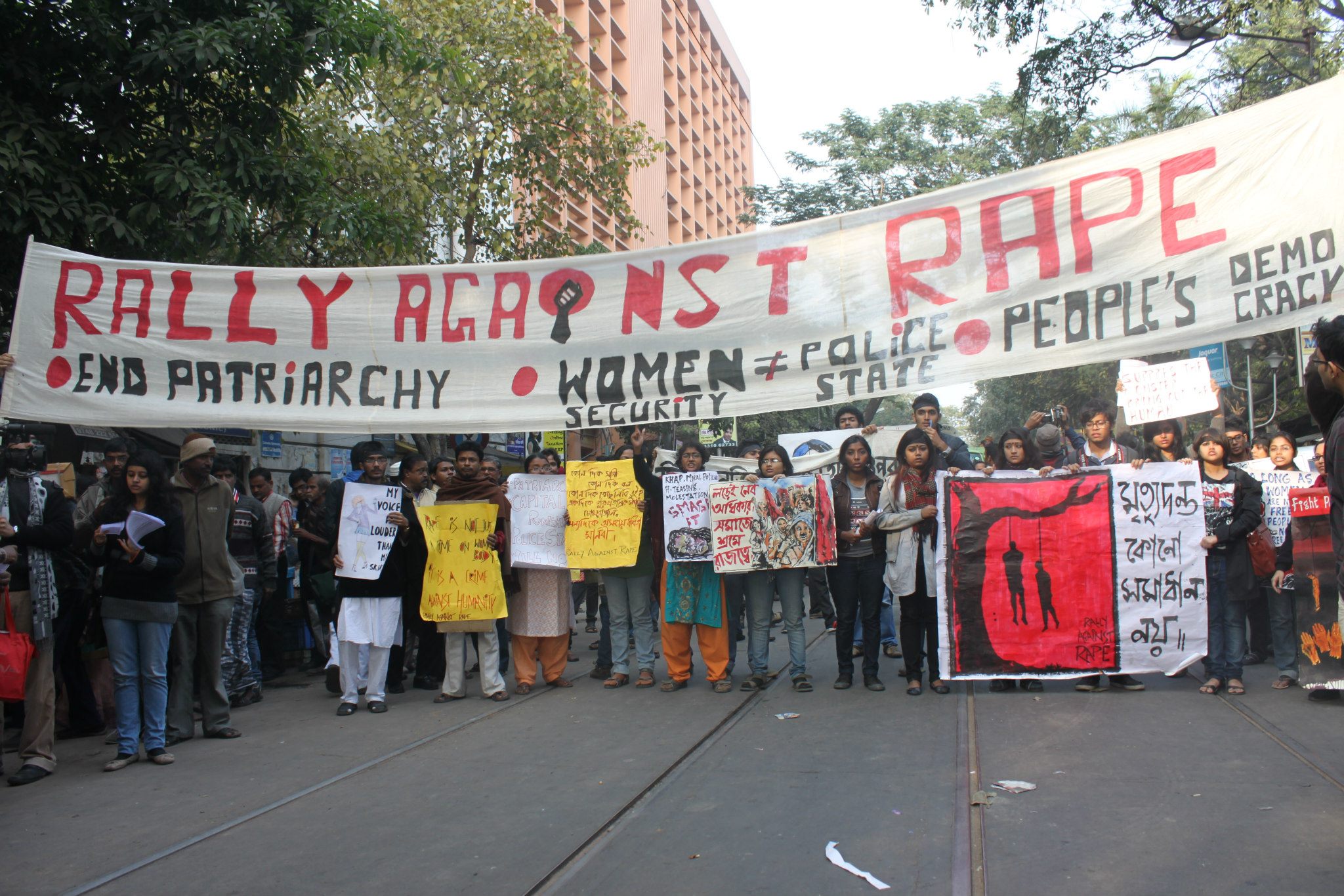
Rally Against Rape: The year came to a tragic end in India as a woman who was brutally gang raped on a moving bus in New Delhi succumbed to her wounds. Indian protesters manifested in large numbers around the country as women’s groups and equality activists called for measures that would help prevent sexual assault. These protest campaigns emphasized the high rate of crimes against women. The messages had a wide range of variety and extremity, from calls for more fast-track sexual assault courts to chemical castration of offenders. This discourse will certainly pour into 2013 as the debate over the treatment of Indian women continues.
